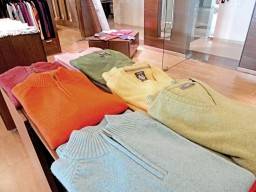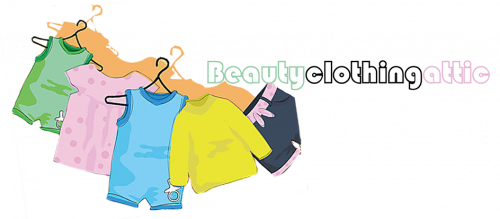
Last year, when Apparel Online captured the ‘pulse’ of the sweater industry in Bangladesh, the most interesting factor that emerged was the efforts to tap the jacquard sweater market shifting out of China and also moving from heavy to finer gauges, marking a movement upward on the value chain. This time around, the pulse is even stronger with not only the jacquard business having shifted from China to Bangladesh, but rather the sweater business as a whole is moving towards Bangladesh, due to the rising labour wages and the scarcity of skilled operators for linking operation in China. Also adding to the growth is the fact that automatic flat knitting machines have resolved the labour situation in the sweater manufacturing industry of Bangladesh and now most of the sweater manufacturing companies are in the process of installing their 2nd or 3rd batch of automatic flat knitting machines. Encouragingly, many new companies are also entering the business, expecting a second growth revolution in the sweater business, after the first one in the late 90s. Apparel Online takes a closer look at what leading sweater manufacturers of Bangladesh are up to.

The growth that Bangladesh has witnessed in the sweater business in the past two decades can be fathomed by the fact that all its competitors like China, Vietnam, Turkey, India, Thailand and Korea, are now buying from the country. “The kind of capabilities the country has for sweater manufacturing is difficult to be replicated by any other country. As not only is the investment huge but also the expertise and support system required has not kept pace with time in other countries,” opines Saiful Hoque, Chairman, Sky Apparels. The industry has taken advantage of lower operator cost and while in Turkey a linking operator makes US $ 10,000 per month and in China they make US $ 1500 per month, in Bangladesh, they make just US $ 200 per month, adding to the competitiveness. Sky Apparels is one of the recent entrants in the sweater industry having installed its first set of 100 flat knitting machines from Stoll, in December 2013 and another set of 100 automatic flat knitting machines would be coming later this year. The company also has in-house yarn dyeing and processing capacity of 10 tonnes per day.

Presence of a robust support system in yarn dyeing and processing is also a major advantage that the country has and nearly 20 sweater manufacturers such as NR Group, Masihata Sweaters, SQ Group, Crown Fashion, Tamishna Group, Mohammadi Group, MR Group, Unifill Group and Sky Apparels have built significant capacities for processing and dyeing greige yarns imported from India, Pakistan or China, while around 25 specialized yarn dyeing & processing companies like RN Spinning Mills, Dong Bang, Dyeing and Textile, Navana Textiles, Anontex Group, Queen South Textile Mills, Keya Group and Russel Spinning Mills, add to the capacity with an average of 25 tonnes per day/per company. Although Bangladesh has started building capacities for manufacturing cotton and acrylic yarns, capacities are still missing for fancy yarns, the demand for which is now increasing.
It was around 2010 when major investments in automatic knitting machines started flowing in, targeted at acquiring the jacquard market which was expected to flow in Bangladesh from China. However, companies like L’Usine Fashion, Sky Apparels and Sonia Sweaters chose to wait and benefited from the same.“Most of the companies bought intarsia flat knitting machines for nearly US $ 70,000 and changed their product line. We didn’t buy a single one of these machines because Bangladesh is still a market for solids and stripes,” avers Saiful, adding that majority of sweaters at stores in the US and Europe, are basic with a few intarsia and jacquard ones. Agreeing with the same, Alamgir Kabir, Managing Director, Best Wool Sweaters, one of the biggest sweater manufacturers of Bangladesh with1600 hand flats, 500 Shima Seiki and 400 Chinese semi-automatic flat knitting machines says, “Automats are only required for some special orders such as intarsia and jacquard, which is a small percentage of the total volume we do and we wanted to do such products, for which we installed machines from Shima Seiki.” Adding further he states, “There is no comparison of hand flat and automatic flat knitting machines on speed and both machines are designed to serve different purposes.” Manufacturing sweaters ranging from 3 to 14 gauge, Best Wool Sweaters is majorly catering to the European market, working with brands like H&M, Celio, C&A, Charles Vogele, Espirit, s.Oliver and El Corte Ingles.
Despite the interest in intarsia and jacquard, Bangladesh is primarily still doing heavy gauge sweaters. “Automated flat knitting machines are required majorly for doing 12 gauge sweaters, but the demand in Bangladesh is for heavy gauge sweaters in the range of 3 to 7 gauge,” reasons Omar Chowdhury, Managing Director, Hydroxide Knitwear. With a turnover of US $ 32 million, the company has 2000 hand flat knitting machines and 74 automatic knitting machines from Stoll. Manufacturing sweaters from 3 to 14 gauge, Hydroxide caters to retailers like Dorothy Perkins, Walmart, New Look, BHS, Burberry, Zara, Debenhams, Pull & Bear, Vero Moda and Matalan.
Following the heavy gauge trend, the next investment of Sky Apparels and L’Usine Fashion will be for heavy knit sweaters. Adding to the same discussion, Alamgir says, “Heavy gauge sweaters are more in demand today because the buyers predict a very cold winter this year. But, most likely, fine gauges would be more in demand in the coming years.” Alamgir also adds that heavy gauge sweaters offer a better FOB than fine gauge sweaters as the yarn consumption is more.
Charting their growth path based on their understanding of the international market and products, L’Usine Fashions has invested in Chinese flat knitting machines as they are equally good at knitting basic sweaters with a certain level of intarsia and jacquard designs, along with heavy gauge sweaters. A French-Bangladesh joint venture company, L’Usine Fashion added 186 automatic flat knitting machines from Honkima and Juinn Long, replacing its 560 hand flat knitting machines, in January 2014. “Since the majority of business is of basics and the kind of jacquards that are coming are not that complex, Chinese flat knitting machines are a good investment as they can handle both the types of sweaters,” points out Prabir Saha, Managing Director, L’Usine Fashion, having a firm belief that a right mix of basic and jacquard order would help a manufacturer for sustained growth. “Basic products are necessary for sustenance, as they offer lower margins but bigger quantities and the small orders are for making profits. I don’t know about others but this is my way of operating and with the new machines coming in from Stoll (for heavy gauges) and Cixing (for finer gauges) in our two upcoming factories, my share of jacquard and intarsia sweaters will increase and with it the FOB of my products,” he shares. The FOB of a jacquard sweater is usually double that of basic sweater because not only the designs retail at a higher price but also because the jacquard machines move at higher speeds and hence require stronger (better quality) yarns. Catering majorly to the Spanish market and working with buyers like River Island, El Corte and Promod, L’Usine would be targeting brands like M&S from next year.
Machine selection
Shima Seiki and Stoll have been leading the drive towards automation in Bangladesh, and the Chinese automatic machine manufacturers have a lot of catching up to do to reach those levels. Yet, companies like Cixing, Juinn Long, Gosheng and Honkima have sold significant number of automatic machines in Bangladesh, as the single system machines from these companies serve as a replacement for the hand flat knitting machines, while being cost-effective. “These machines offer functional options for both fancy jacquard knitting and basic sweaters, and since the price is very attractive, one can get a return on investment in a year,” opines Omar.
Presently, there are about 70 odd Chinese automatic knitting machine manufacturers and brands present in Bangladesh. But the growth of the Chinese companies might be cut short as sweater manufacturers have opted to build capacities for producing high-end jacquard and intarsia sweaters, by installing machines from Shima Seiki and Stoll. The reasons for choosing Shima Seiki and Stoll are not based on the quality of the output since both are considered top of the line machines but based on the finance options given by both the companies; and secondly, since Shima Seiki is lighter by 800 kg, its machines are preferred by manufacturers with multi-storey units. Many are mixing and matching the brands, Sky Apparels and L’Usine Fashions have gone ahead to install automatic machines from Shima Seiki, Stoll and Cixing. “It creates competition on the shop floor and as a sweater manufacturer we get the best service and response from all the companies. Moreover the operators can be easily trained to handle machines from different brands as the only difference while operating is in the software programming,” reasons Saiful.
But still a large segment of sweater manufacturers like Best Wool and Crown do not believe in mixing a set of automatic machines. Alamgir also states, “Shima gives us good service and fantastic support. They not only trained our operators in-house but also took some of our people to Japan for training. Spare parts availability and the locally-based team of Japanese technicians are excellent.” With a set of 126 automatic flat knitting machines from Stoll, Crown Fashion & Sweater has full faith in the brand and all future investments would be in Stoll only. “Since the programming system of the machines from both the brands is completely different, I wouldn’t like to change the brand as we have a huge team of sampling operators and knitting machine programmers who are already trained on Stoll machines,” shares Rezaul Ahsan, Chairman, Crown Fashion & Sweater. With in-house yarn processing capabilities, Crown Fashion & Sweater has two yarn dyeing facilities with a capacity of nearly 25 tonnes per day, which cater to 75% of the sweater manufacturers in the country. With a turnover of US $ 60 million divided equally among sweater manufacturing and yarn processing, the company is majorly catering to the European market and working with brands like H. Obermayer Gmbh, Karstadt Warenhaus AG, Distra Warenhandels, Gruppo Coin (OVS), Primark, Okaidi and Vegotex International. Manufacturing sweaters in gauges ranging from 3 to 12, Crown Fashion & Sweaters also has an embroidery unit for value addition on its products.
Labour issues reduce dependence on hand flats
While, most of the sweater manufacturers have a divided opinion on the shift of jacquard orders from China and the extent of application of automatic flat knitting machines, yet everyone agrees on the dwindling labour availability, continuous demand for hikes in piece rate and absenteeism of workers in peak seasons as a major reason for replacing hand flat knitting machines with automatic knitting machines and the companies foresee zero hand flat knitting machines in Bangladesh in the coming 2 to 3 years. “Earlier we were only able to book 75% to 80% of our capacities because of labour shortage but now with the automated machines, we can book 100% of our capacity,” shared Prabir. With the automatic knitting machines, the knitting operators’ pay system has also changed from piece rate to salary, which has greatly reduced the labour tensions, delays and losses caused due to under-utilisation of capacities. “The reason for dissent among the operators was that they earn more in the peak periods and relatively lesser in the lean periods, now with the automatic machines their monthly take home would also be stable,” explains Enayetuddin Kaiser Khan, Managing Director of Sonia & Sweaters Ltd., which would install its first set of 100 Shima Seiki machines in the coming months. Presently the company has 2500 hand flat knitting machines and a turnover of US $ 27 million from sweaters. Having created a niche in 12 and 14 gauge sweaters, Sonia & Sweaters caters to brands like Marks & Spencer, Kenneth Cole, GAP, Metro Group, Carrefour Group, George and Betty Barclay Group.
Retraining manual flat knitting machine operators on automatic knitting machines is the sustainable mantra today. Although most of the companies have one operator handling 4 machines on an average in Bangladesh, Sky Apparels has been able to touch the mark of one operator handling six automatic knitting machines and is aiming at achieving the coveted mark of one operator handling 10 automatic machines, which is being followed in China and Turkey. “In our upcoming factories in Mawna, we would set-up a separate training centre for fresh operators focusing on the aspects of handling needle breakage, yarn breakage and other similar production bottlenecks, which lower the productivity of the machine,” shares Prabir of L’Usine Fashion.
Advantage sweaters
“Sweaters today offer greater margins than offered by knit or woven apparels, and at times even more than twice, all because of the reduced labour dependency and reduction in the overall expenditure on labour wages,” says Prabir. Another advantage in sweater business is that only 45% of the LCs are opened back to back, which is as high as 75% in knit or woven apparels, thus giving a substantial amount of ‘free’ cash in the hands of sweater manufacturers. Add deferred payment options offered by leading automatic knitting machines providers, sweater manufacturing becomes unarguably the most lucrative apparel manufacturing business, as under the deferred payments schemes, sweater manufacturers start repaying the capital invested only after a period of 2 to 3 years of purchasing the machines. The third advantage of sweaters manufacturing, which also adds to the margins, is the higher average FOBs as compared to knit or woven apparels and with the recent adoption of automatic flat knitting machines, the buyers are also willing to pay a higher price for the product. Having realized the advantage of being in the sweater business, companies like Mondol Group and Ananta Group have also started sweater manufacturing operations.
Competition at home
Most of the existing sweater companies are positive of 20% to 50% revenue growth due to upcoming expansions. However, on the flip side with so much capacity building up and even more yet to come in the coming years, sweater manufacturers are worried about the level of competition in the time to come. “The men will be separated from the boys, when the buyers will start looking for ‘US $ 5’ sweater manufacturers. That is when I feel our past performance, experience and quality standards will help us survive,” predicts Enayetuddin, who will be adding 100 machines from Shima and another 100 from a Chinese company before the end of 2014. “The expansions have been more rapid than the influx of orders, so the manufacturers are really pressed to utilize the capacities and working on relatively lower margins as the buyers are yet to increase the price. Due to this we have been constantly trying to reduce our wastages,” adds Prabir.
L’Usine Fashion is installing an ERP system and also looking at implementing industrial engineering in its manufacturing facilities, although admitting the scope of IE is more in sewing than sweaters. “At present, I’m focussing on reducing the wastages in sourcing and production, as it is taken for granted than 10% additional yarns should be purchased and 5% extra garments should be produced. So right now we are studying the actual consumption and production, based on which we purchased 5% less yarns this year,” explains Prabir. L’Usine Fashion, whose new factories will begin production by the end of 2014, aims to touch US $ 40 million by 2015 and US $ 50 million by 2016. “Of the two factories we are building, one is 100% owned by us and the other is a joint venture project with a Hong Kong based company,” shares Prabir.
Saiful of Sky Apparels has also focussed on operational excellence for reducing operating overheads and remaining cost-competitive. “When we were setting up our factory, the air conditioning requirement was 160 tonnes, but we went for 80 tonnes of air conditioning from a Dubai based company, while maintaining the same humidity and temperature conditions, the capital investment was more but the power consumption is lower,” he explains. Adding another 100 automatic flat knitting machines and looking at doubling its turnover of US $ 10 million by next year, Sky Apparels have done interventions like Epoxy floor coating.
Alamgir is looking at markets like Russia which although is in the nascent stages, has the advantage of longer winters. With a turnover of US $ 60 million, Best Wool Sweater is looking at 30% growth and developing backward linkages like yarns and zippers.

Leave a Reply